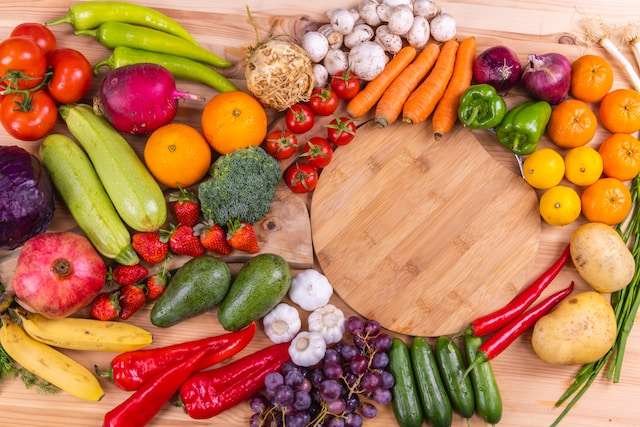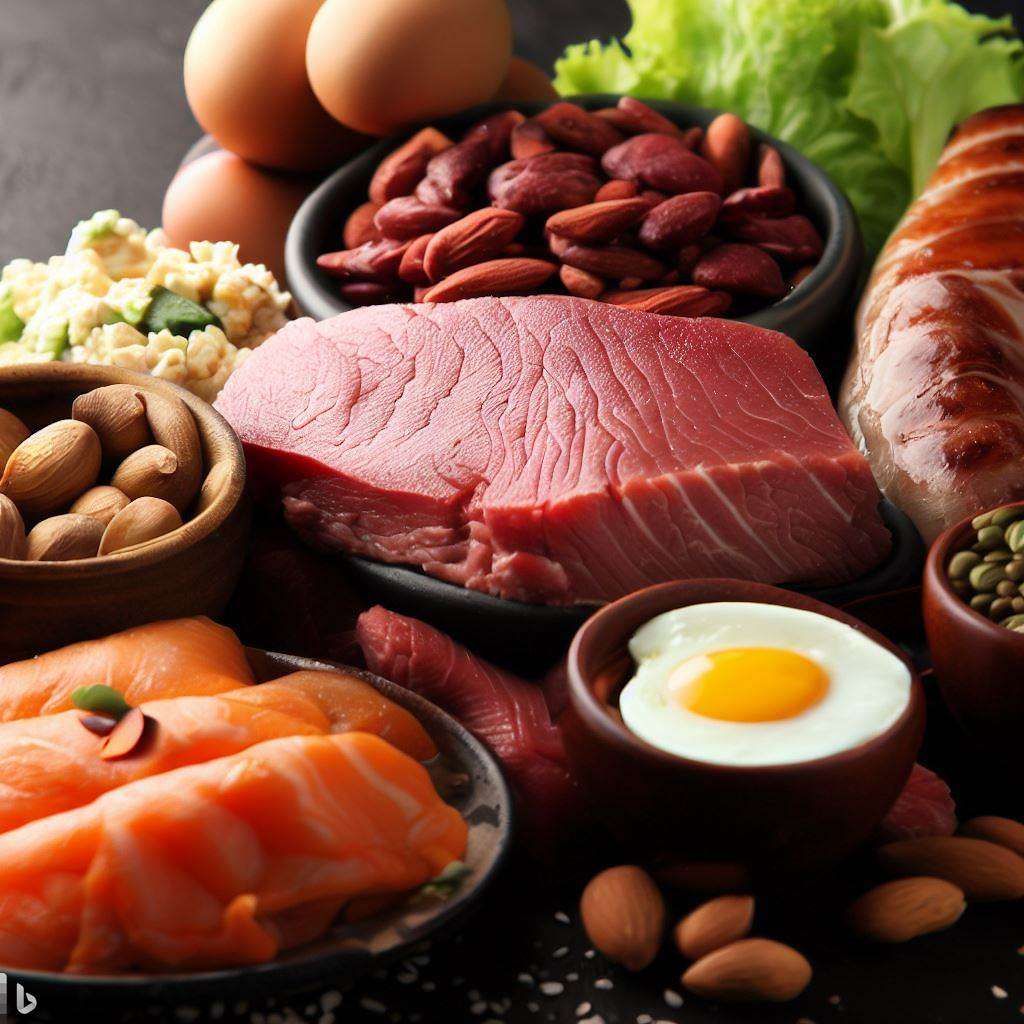How to Start Eating Healthy

How to Start Eating Healthy
Learning how to start eating healthy can be a positive and beneficial change for your overall well-being.
Here are some steps to help you get started.
Set clear goals:
Define why you want to eat healthy and set specific, achievable goals. Whether it’s to improve your energy levels, manage weight, or enhance your overall health, having a clear purpose will help you stay motivated.
Educate yourself:
Learn about the basics of nutrition and understand what constitutes a balanced diet. Familiarize yourself with different food groups, macronutrients, and portion sizes. This knowledge will guide your food choices.
Make gradual changes:
It can be overwhelming to overhaul your entire diet overnight. Start by making small, sustainable changes. For example, swap sugary drinks for water, incorporate more fruits and vegetables into your meals or choose whole grains over refined grains.
Plan your meals:
Take some time to plan your meals for the week. This will help you make healthier choices and prevent impulsive, unhealthy eating. Plan balanced meals that include lean proteins, whole grains, fruits, vegetables, and healthy fats.
Stock up on healthy foods:
Fill your kitchen with nutritious options. Stock up on fresh produce, whole grains, lean proteins, and healthy snacks. Having healthy foods readily available will make it easier to make better choices.
Practice portion control:
Be mindful of portion sizes. Use measuring cups or a food scale to understand appropriate serving sizes. Eating balanced portions will help you avoid overeating.
Cook at home:
Cooking your meals at home gives you control over ingredients and preparation methods. Experiment with new recipes using fresh, whole ingredients. This way, you can avoid added sugars, unhealthy fats, and excessive sodium commonly found in processed foods and restaurant meals.
Stay hydrated:
Make water your primary beverage. Stay hydrated throughout the day, as it helps with digestion, metabolism, and overall health. Limit your intake of sugary drinks and alcohol.
Be mindful of snacks:
Choose nutritious snacks, such as fruits, vegetables with hummus, Greek yogurt, or nuts. Avoid relying on processed snacks that are high in added sugars, unhealthy fats, and empty calories.
Practice moderation:
Allow yourself occasional treats in moderation. Completely depriving yourself of foods you enjoy can make healthy eating unsustainable. Enjoy your favorite treats mindfully and in controlled portions.
Seek support:
Consider involving a friend or family member in your healthy eating journey. Having a support system can keep you motivated and make the process more enjoyable. You can also consider consulting with a registered dietitian for personalized guidance.
Remember, adopting a healthy eating pattern is a long-term commitment. Focus on progress rather than perfection and be patient with yourself as you make positive changes.
For more information on eating healthy, read more about How to Eat Healthy Everyday

7 Day How to Start Eating Healthy Meal Plan
Here’s a sample 7-day healthy eating meal plan to give you an idea of how to structure your meals. This plan focuses on balanced meals with a variety of nutrients. You can adjust it based on your dietary preferences, portion sizes, and specific nutritional needs.
Monday: Start Eating Healthy
- Breakfast: Scrambled eggs with sautéed vegetables (bell peppers, spinach, onions) and whole wheat toast.
- Lunch: Quinoa salad with grilled chicken, mixed greens, cherry tomatoes, cucumber, and a light vinaigrette dressing.
- Snack: Greek yogurt with mixed berries.
- Dinner: Baked salmon with roasted sweet potatoes and steamed broccoli.
- Snack: Carrot sticks with hummus.
Tuesday: Start Eating Healthy
- Breakfast: Overnight oats made with rolled oats, almond milk, and chia seeds, and topped with sliced bananas and a drizzle of honey.
- Lunch: Whole grain wrap with turkey, avocado, lettuce, tomato, and mustard. Side of mixed greens.
- Snack: Almonds and an apple.
- Dinner: Grilled chicken breast with quinoa and roasted Brussels sprouts.
- Snack: Sliced cucumbers with Greek yogurt dip.
Wednesday: Start Eating Healthy
- Breakfast: Spinach and mushroom omelet with a side of whole grain toast.
- Lunch: Lentil soup with a side salad (mixed greens, tomatoes, cucumber) and a lemon-tahini dressing.
- Snack: Mixed berries with a handful of nuts.
- Dinner: Baked cod with quinoa and steamed asparagus.
- Snack: Celery sticks with almond butter.
Thursday: How to Start Eating Healthy
- Breakfast: Whole grain toast topped with mashed avocado and poached eggs.
- Lunch: Chickpea salad with mixed vegetables (bell peppers, cucumbers, red onions) and a lemon-herb dressing.
- Snack: Greek yogurt with sliced peaches.
- Dinner: Grilled tofu with brown rice and stir-fried mixed vegetables (broccoli, carrots, snap peas).
- Snack: Rice cakes with almond butter.
Friday: Start Eating Healthy
- Breakfast: Berry smoothie made with spinach, mixed berries, almond milk, and a scoop of protein powder.
- Lunch: Quinoa and black bean burrito bowl with lettuce, tomatoes, corn, avocado, and a squeeze of lime.
- Snack: Sliced bell peppers with hummus.
- Dinner: Grilled shrimp skewers with quinoa and roasted zucchini.
- Snack: Hard-boiled eggs with cherry tomatoes.
Saturday: Start Eating Healthy
- Breakfast: Vegetable and feta cheese omelet with whole wheat toast.
- Lunch: Mediterranean salad with mixed greens, cherry tomatoes, cucumbers, olives, feta cheese, and a lemon-olive oil dressing.
- Snack: Trail mix with nuts, seeds, and dried fruits.
- Dinner: Baked chicken breast with sweet potato wedges and steamed green beans.
- Snack: Greek yogurt with sliced almonds.
Sunday: Start Eating Healthy
- Breakfast: Whole grain pancakes topped with fresh fruit and a drizzle of honey.
- Lunch: Quinoa-stuffed bell peppers with black beans, corn, diced tomatoes, and melted cheese.
- Snack: Sliced apples with almond butter.
- Dinner: Grilled steak with roasted potatoes and sautéed mushrooms.
- Snack: Celery sticks with hummus.
This is just a sample meal plan, and individual nutritional needs may vary. Customize the plan according to your preferences, dietary restrictions, and portion sizes.
It’s always a good idea to consult with a registered dietitian for personalized guidance based on your specific needs and goals.
Nutrition to Start Eating Healthy
How to start eating healthy and provide your body with the necessary nutrients, vitamins, and minerals it needs to function properly.
It requires a balance of various food groups, focusing on whole, minimally processed foods.
Here are some key components of a healthy diet:

Fruits and vegetables
These should form a significant part of your diet. They are rich in fiber, vitamins, minerals, and antioxidants. Aim to include a variety of colorful fruits and vegetables to maximize nutrient intake.

Whole Grains
Choose whole grains over refined grains whenever possible. Whole grains such as brown rice, quinoa, whole wheat bread, and oats provide fiber, B vitamins, and minerals.

Lean Proteins
Include lean sources of protein in your diet, such as poultry, fish, legumes, tofu, and low-fat dairy products. Protein is important for building and repairing tissues, as well as supporting various bodily functions.

Healthy Fats
Include sources of healthy fats in your diet, such as avocados, nuts, seeds, olive oil, and fatty fish like salmon. These provide essential fatty acids and can help support heart health.

Limit Sugars
Minimize your consumption of foods and drinks with added sugars, such as sodas, sugary snacks, and processed foods. Opt for natural sources of sweetness like fruits.

Reduce Salt
Limit your intake of sodium by reducing the consumption of processed and packaged foods, which often contain high levels of sodium. Instead, season your meals with herbs, spices, and other flavorings.

Stay Hydrated
Drink an adequate amount of water throughout the day to stay hydrated. Water is essential for digestion, absorption of nutrients, temperature regulation, and overall body function.

Portion Control
Be mindful of portion sizes to avoid overeating. Listen to your body’s hunger and fullness cues and aim for balanced meals that include appropriate portions of different food groups.

Limit Processed Foods
Minimize your intake of processed and packaged foods, as they often contain high levels of added sugars, unhealthy fats, and sodium. Focus on whole, unprocessed foods as much as possible.

Mindful Eating
Slow down and pay attention to your eating experience. Chew your food thoroughly, savor the flavors, and eat mindfully without distractions. This can help you enjoy your meals and recognize your body’s signals of fullness.
It’s important to remember that everyone’s nutritional needs may vary, so it’s beneficial to consult with a registered dietitian or healthcare professional for personalized guidance based on your specific requirements, health goals, and any dietary restrictions you may have.
